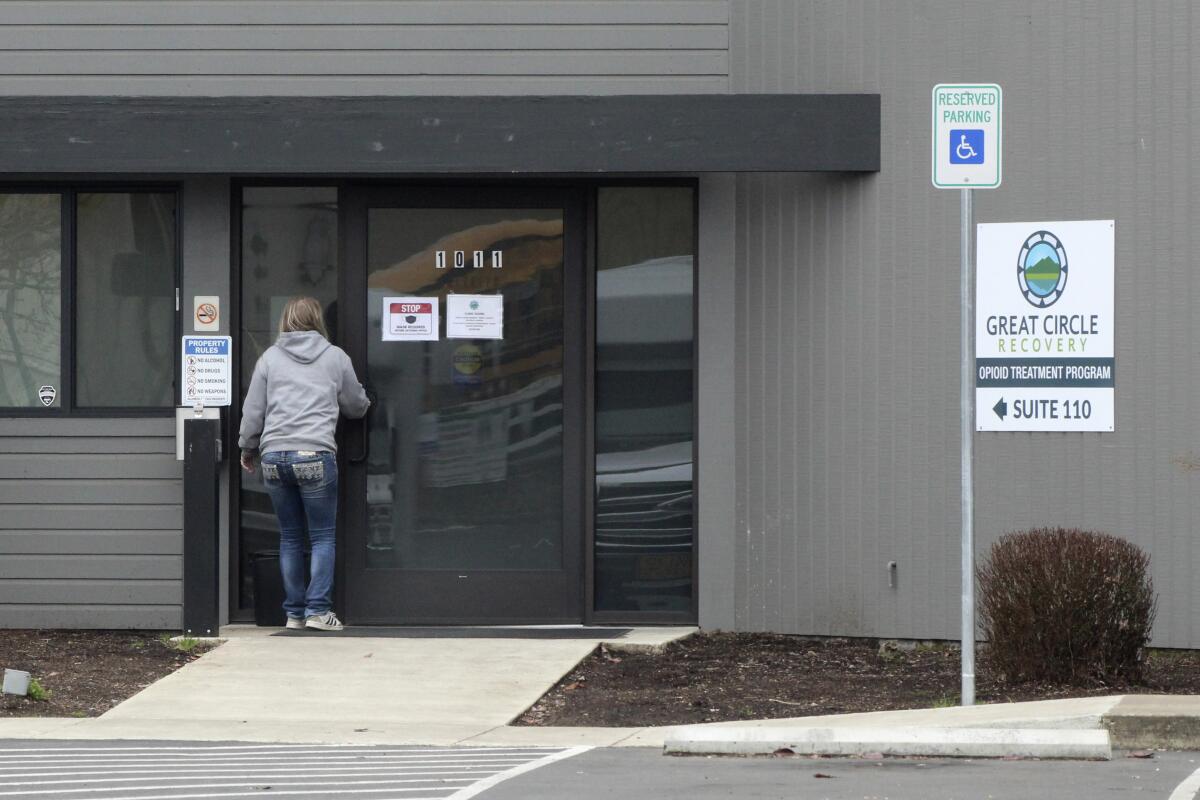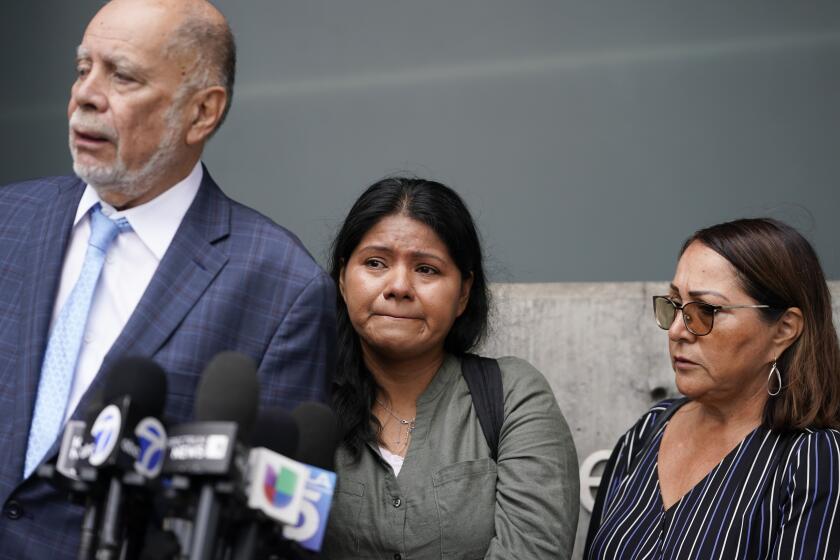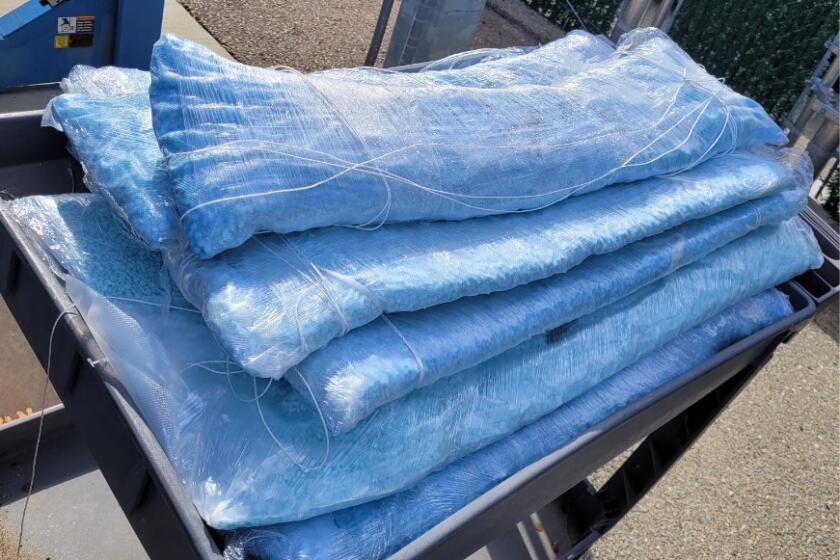Opinion: The real reason why Oregon recriminalizing drugs is a cautionary tale

In a move widely hailed as a failure for the drug decriminalization movement, Oregon restored criminal penalties for low-level drug possession in April. Headlines chalked up this policy reversal to mounting overdoses, evoking a crisis in the state.
In reality, Oregon’s overdose rate remains in the middle of the pack nationally, with more than half of U.S. states having a greater number of deaths per capita. But increasing homelessness and visible drug use have spurred panic over drugs, which overruled statistics and scientific recommendations — and offers a cautionary tale about the fight for sensible drug laws.
Drug use has become deadlier for teens, and Southern California is an overdose hot spot.
In 2020, a majority of Oregon voters approved decriminalization via Measure 110 — a landmark ballot measure that made simple possession of a small quantity of drugs for personal use subject to citation instead of jail. It diverted tax revenue from cannabis, which the state legalized for recreational use in 2014; in its first round of grants alone, the measure infused $300 million into the state’s threadbare drug treatment system and funded harm reduction services.
These were solid steps, backed by decades of science about addiction and consistent with United Nations recommendations in support of drug decriminalization. Other nations, including Portugal, Spain and Uruguay, have seen success with similar shifts away from arrest and toward healthcare-based approaches.
However, the same year Measure 110 passed, fentanyl use rose sharply on the West Coast. Despite nearly a decade of advance notice from the fentanyl crisis in the East, the region failed to prepare. As in other Western states, overdose rates in Oregon soared — from among the lowest in the country to nearly reaching the national average in 2022. Although data suggest that rates of drug use in Oregon have remained fairly stable in recent years, fentanyl makes for a much deadlier drug supply. At the same time, homelessness in Oregon has risen rapidly. As more people live outside, more drug use that used to occur behind closed doors now happens in plain sight.
The combination of these factors fed the perception that Oregon’s drug crisis was uniquely severe. Even though research shows that drug decriminalization did not increase the death rate and broadly supports leaving it in place to reduce the harms and wasteful spending of incarceration, Measure 110 became a scapegoat for Oregon’s social problems. Democrats, including Portland’s typically progressive district attorney, reversed their support and in effect repealed it.
Since the law’s approval, the state has seen a surge in public drug use fueled by fentanyl and an increase in synthetic opioid overdose deaths.
Criminal penalties do little to affect rates of drug use. Typically they just increase the degree to which people with addiction bounce between the street and jail, a cycle of imprisonment and release known to drive overdose deaths. Occasional anecdotes of people finding their way into recovery through contact with the criminal justice system are outliers. If police massively scale up arrests of people who use drugs, increased overdose deaths will be the predictable result.
Countries such as Portugal and Norway have followed a well-defined, alternative path to reduce drug-related deaths and public drug use. The steps include: Scale up opportunities for compassionate contact with the system, such as with free walk-in clinics for vulnerable people who use drugs. Make it easier and cheaper to access buprenorphine and methadone, medications that treat opioid addiction, than street fentanyl. Give people safe, controlled spaces to keep their drug use out of the public sphere while connecting with healthcare and shelter. Defend their human dignity and help them build positive relationships with health professionals and social workers. Drug decriminalization is worthwhile, but it does not replace these larger solutions.
Public drug use and streets full of tents are distressing for many Oregonians. They also provide images that are easily exploited by mainstream media and politicians to stoke public fears. But recriminalizing drugs is unlikely to decrease homelessness or eliminate public drug use.
Seizures of fentanyl smuggled into California have dramatically surged over the last few years, according to officials.
Although blaming drugs for homelessness is a common mistake, the scientific consensus shows that increased housing costs are the single most important cause. And Oregon simply does not have sufficient shelter beds or public housing options for those affected by extremely sharp increases in those costs. The state also struggles to hospitalize people in need of treatment for severe mental illness, both because there aren’t beds available and because its laws inhibit holding people involuntarily in many cases, including serious episodes of psychosis.
Oregon’s public safety system is struggling. Calling 911 frequently means being put on hold for several minutes. There are often no ambulances to dispatch. It took police 21 minutes on average to respond to a high-priority crime as of last year, five minutes longer than the year before.
These real public safety issues demand urgency. They also have nothing to do with the fact that drug users were not being arrested for possession. Under Measure 110, theft, public indecency, assault — and selling drugs — remained illegal. Focusing on punishing people who use drugs will further stretch the police force while not solving the larger problems.
Measure 110 took steps in the right direction by investing in social services. However, a single round of funding cannot undo decades of inadequate spending on addiction treatment and prevention. Robust mental health, substance treatment and public housing systems take years to build.
With the nation’s housing and overdose crises worse than ever, what’s happening in Oregon is not unique. Similar tensions between scientific approaches to addiction and concerns about homelessness and public drug use are playing out in San Francisco, Philadelphia, Boston and other cities. Our task is to resist the temptation to cave to panic and instead commit to evidence-backed solutions.
Morgan Godvin (@MorganGodvin) is a lifelong Oregonian, writer and drug policy researcher who served on the Measure 110 Oversight and Accountability Council and the Multnomah County Local Public Safety Coordinating Council. Joseph Friedman (@JosephRFriedman) is a researcher at UCLA who has published widely on the U.S. overdose crisis.
More to Read
A cure for the common opinion
Get thought-provoking perspectives with our weekly newsletter.
You may occasionally receive promotional content from the Los Angeles Times.













